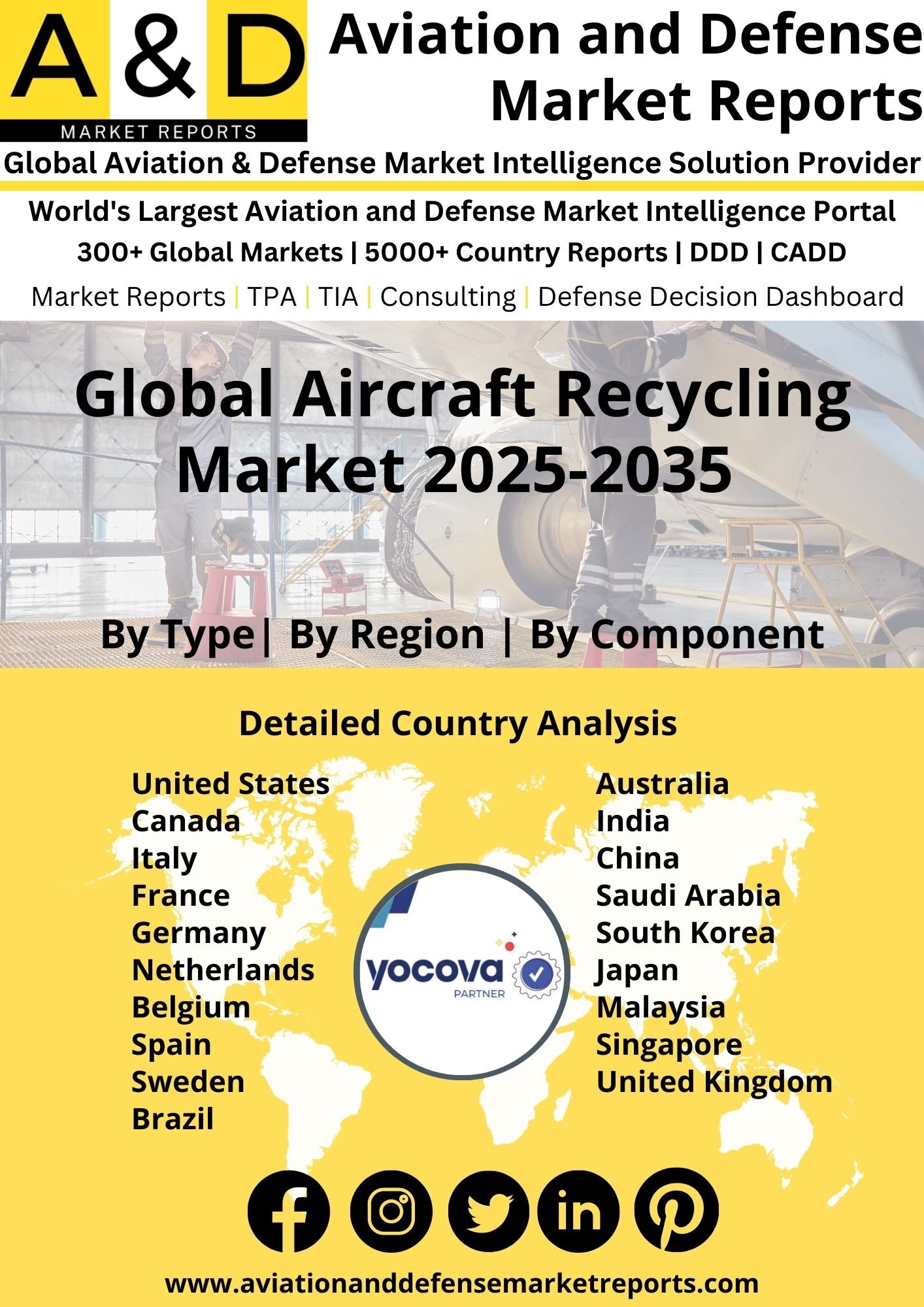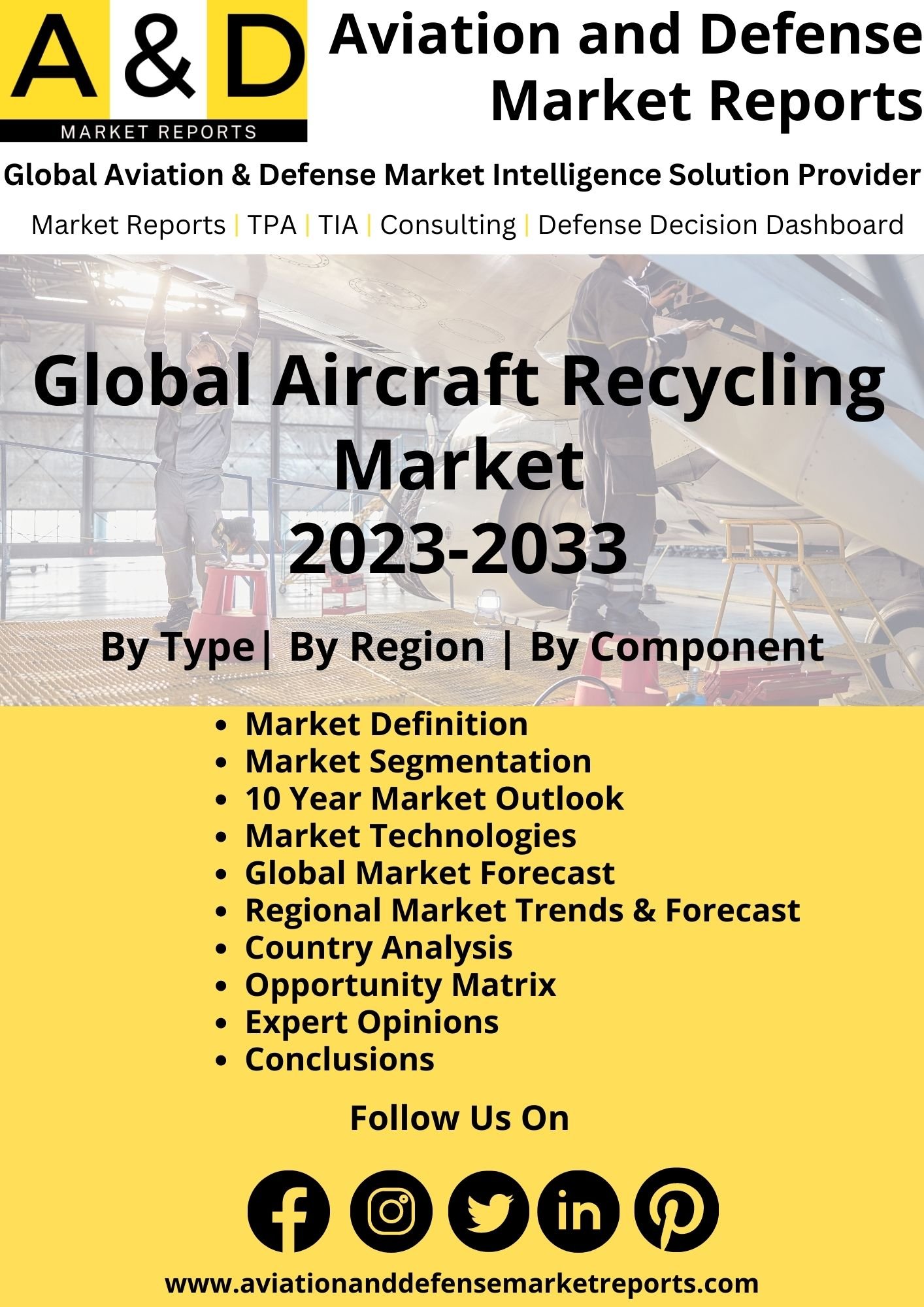Description
Aircraft Recycling Market
Frequently Asked Questions of Aircraft Recycling Market
The aircraft recycling market process typically begins with the dismantling of the aircraft. Skilled technicians carefully remove valuable components and parts, such as engines, avionics, landing gear, and other systems, which can be refurbished, sold, or reused in other aircraft. These components undergo testing, repair, and certification to ensure their airworthiness before being reintroduced into the market.
After component recovery, the aircraft’s structure is disassembled, and various materials are sorted for recycling. Aluminum, which is commonly used in aircraft construction, can be melted down and reused in other industries. Steel, copper, and other metals are also recycled. Additionally, other materials like plastics, composites, and glass are sorted and recycled, if feasible.
Aircraft contain various hazardous materials and substances, such as fuels, lubricants, hydraulic fluids, and chemicals. Proper handling, containment, and disposal of these substances are critical during the recycling process to prevent environmental contamination. Qualified recycling facilities follow stringent regulations and guidelines to ensure the safe management of hazardous materials.
Aircraft recycling market forecast is subject to various international and national regulations and guidelines to ensure safe and environmentally sound practices. Regulatory bodies, such as the International Civil Aviation Organization (ICAO), European Aviation Safety Agency (EASA), and Federal Aviation Administration (FAA), provide guidelines and standards for aircraft dismantling and recycling processes.
Major factors driving Aircraft Recycling Market Growth
As economies develop and air transportation becomes more accessible, there is an increased need for helicopters in various sectors such as emergency medical services, search and rescue, tourism, law enforcement, offshore operations, and corporate transport. This aircraft recycling market growth in helicopter applications can contribute to an increased demand for helicopter engines. Helicopters play a crucial role in military operations for tasks like reconnaissance, troop transport, combat support, and anti-submarine warfare. As defense budgets evolve and countries update their helicopter fleets, there will be an increased demand for engines that offer improved performance, efficiency, and reliability to meet military requirements.
Trends influencing the Aircraft Recycling Market Size
The aircraft recycling market industry has seen advancements in technology and processes to improve efficiency and environmental performance. Companies are exploring innovative methods to recycle composite materials, which have been challenging to recycle in the past. Furthermore, some aircraft manufacturers are designing aircraft with easier disassembly and recycling in mind, aiming to improve the recyclability of future aircraft models.
Aircraft Recycling Market Forecast & Dynamics
The increasing need to minimize waste, conserve resources, and reduce the environmental footprint associated with aircraft retirement. The aircraft recycling market forecast includes a comprehensive aircraft recycling market analysis and aircraft recycling market size. The market analysis includes regional market size, drivers, restraints, and opportunities. The regional analysis also includes country-wise market size.
Aircraft Recycling Market Analysis for Recent Developments
Constellium SE, based in Paris, has announced a collaboration with Tarmac Aerosave, based in France, to investigate the development of technologies and procedures for recovering aluminium from end-of-life aircraft and reusing it within the aerospace value chain. Tarmac Aerosave is involved in aeroplane storage, maintenance, restoration, and disassembly. Its principal shareholders are the aeroplane manufacturer Airbus, the aerospace components supplier Safran, and the environmental services firm Suez.
The global landscape of aircraft recycling has seen notable advancements, driven by increasing environmental awareness, regulatory pressures, and the pursuit of sustainable aviation practices. Aircraft recycling, also known as end-of-life management, involves dismantling retired aircraft and recovering valuable materials while minimizing environmental impact. Advancements in recycling technologies and processes enable the efficient recovery and reuse of materials such as aluminum, titanium, and composites from retired aircraft. These materials are then repurposed for various industries, contributing to resource conservation and reducing the demand for new raw materials.
Environmental regulations and sustainability initiatives have prompted the aerospace industry to adopt greener practices in aircraft disposal. Aircraft recycling facilities are now equipped with advanced methods for handling hazardous materials and ensuring responsible waste disposal. Global collaboration and standardization efforts in aircraft recycling practices contribute to the development of best practices and the establishment of environmentally friendly guidelines. This ensures consistency and responsible handling of retired aircraft across different regions. The ongoing evolution of aircraft recycling in 2023 underscores a commitment to addressing the environmental footprint of aviation, promoting circular economy principles, and fostering a more sustainable approach to the life cycle of aircraft.





